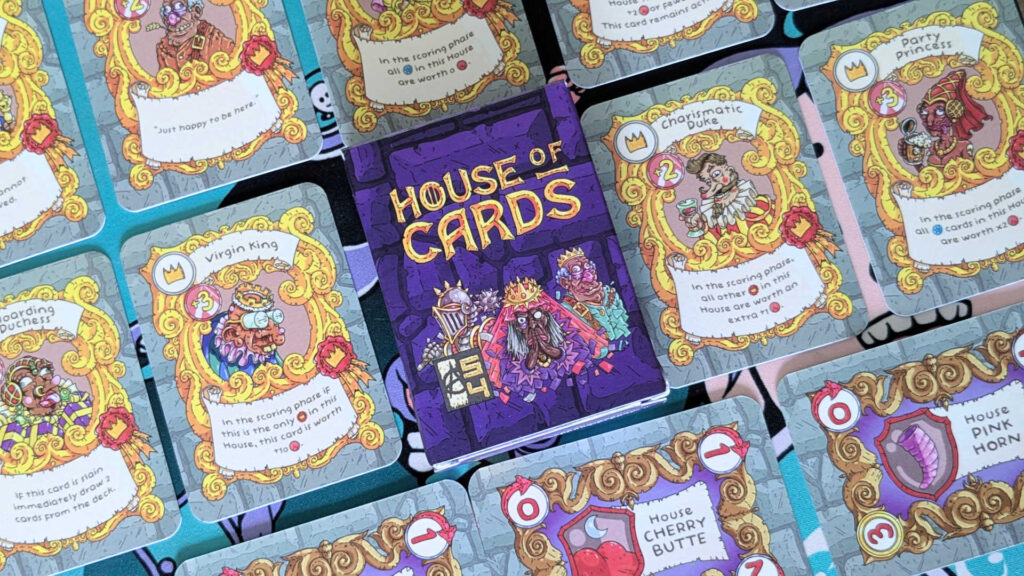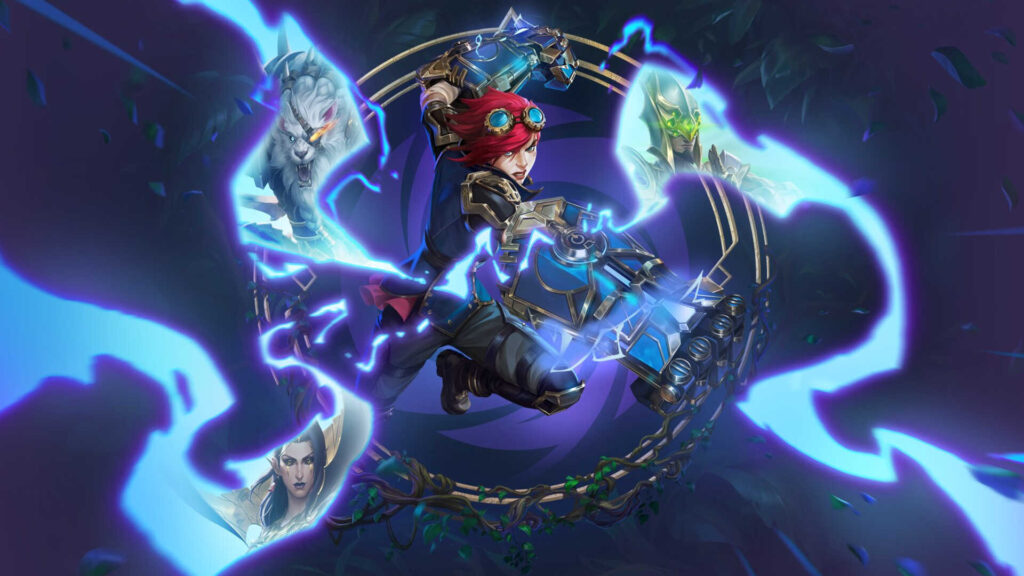Despite the fact that my tabletop games collection is overflowing with big box board and card games, with fancy components and elaborate rulesets, there’s something to be said for the simplicity and minimalism of certain card games. Take Love Letter, for example, a game which I own in a few different variants, including the original, the excellent Jabba’s Palace and the beautiful, oversized version of Princess, Princess Ever After. Love Letter is a masterclass in minimalism; not just in terms of the total number of cards needed to play (the standard version is comprised of just 18 cards), but also in its gameplay. Essentially, it boils down to drawing 1 card to your hand, then playing a card from the 2 you’re holding. Why is this important in a review of a different game altogether? Well, that’s because House of Cards takes that familiar “draw 1, play 1” gameplay, and adds a multitude of options and scoring opportunities on top. Let’s find out if House of Cards is worth playing!
Table of Contents
ToggleWhat is House of Cards?

As mentioned above, House of Cards is a game which features very straightforward mechanics, and it’s a game which can be picked up and played almost immediately. The complications, and it must be said that they’re hardly complex, come from the interactions and scoring opportunities that each card makes possible. Just check out the reference card above; that’s pretty much all there is to it, beyond knowing the handful of game terms which are on the reverse side of the pictured card.
How to Play House of Cards
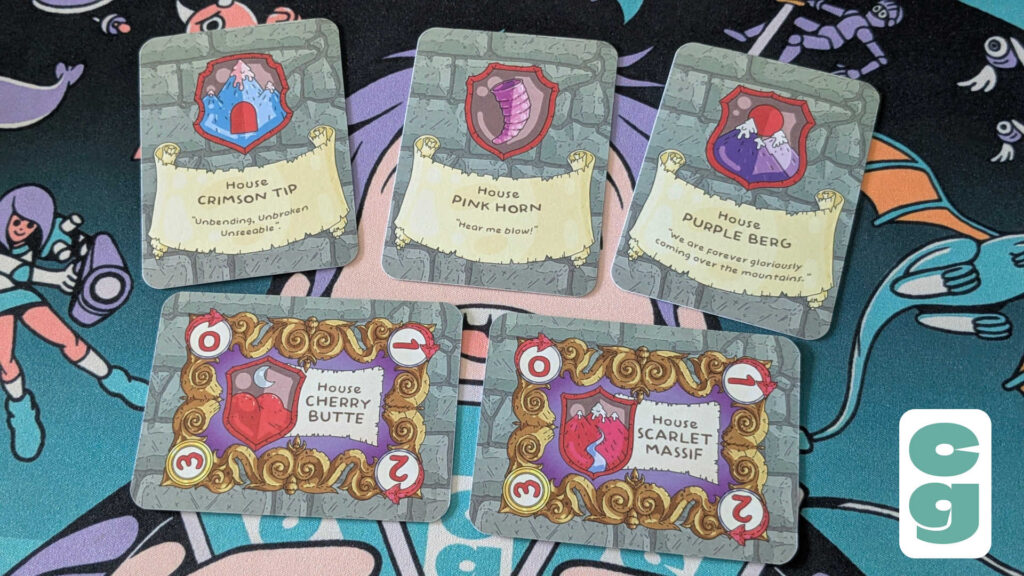
Players first choose their House, taking a scoring card to track their House’s points total; these are double sided, with the crest, name and motto on one side, and the score tracker on the other, as you can see above. They’re then dealt 2 random Starting Royals, and this begins what is hopefully a long and fruitful era for their House (though the abilities of these Royals activate immediately, which could end with one of them being Slain, or discarded; so maybe not!).
Starting hands consist of 3 Character cards dealt to each player, and then 3 more are dealt face down to become the Sanctuary row in the center of the table. The rest of the Character deck is placed next to the Sanctuary. You can see how the game looks at the outset in the below image.
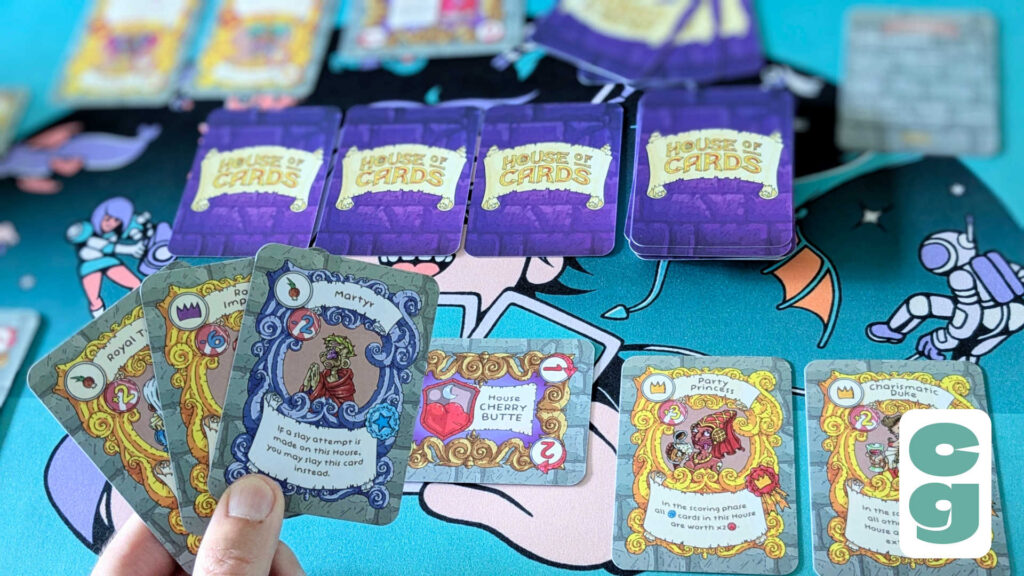
The first player then draws 1 card from the Character deck, and plays 1 card from their hand, resolving the played card’s ability before play moves to the next player, and they do the same. Royalty and Entourage cards (marked with a Crown and Star symbol respectively) can be played into any player’s House, and activate or contribute to points for the player whose House they’re in. Other Character cards are played, their abilities activate, and they’re then discarded.
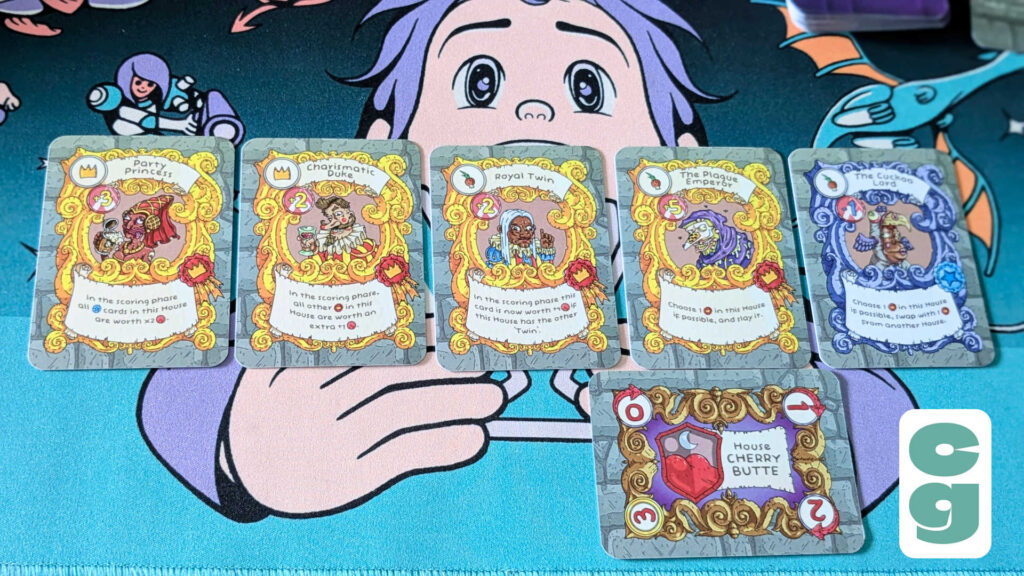
When there are no Character cards in the deck left to draw, the round ends and the scoring phase begins. Players count all of the points in their House, with a final example of a House at the end of a round shown above, and gain 1 Victory Point if they have the highest total. A new round is started, and once a player reaches a total of 3 Victory Points, they win the game, becoming the Ruling House of the Red Mountains!
Is House of Cards Fun to Play?
The deceptive simplicity of House of Cards masks a surprisingly cutthroat game of scheming Royalty and the devious members of their Entourage. It’s tremendously fast-paced and full of hilariously mean tactics, which results in plenty of trash talk and laughter at the table. It does work much better at the higher end of the 5 players it can support in play, with extra players being there to balance out and pull back any runaway leader in the points stakes.
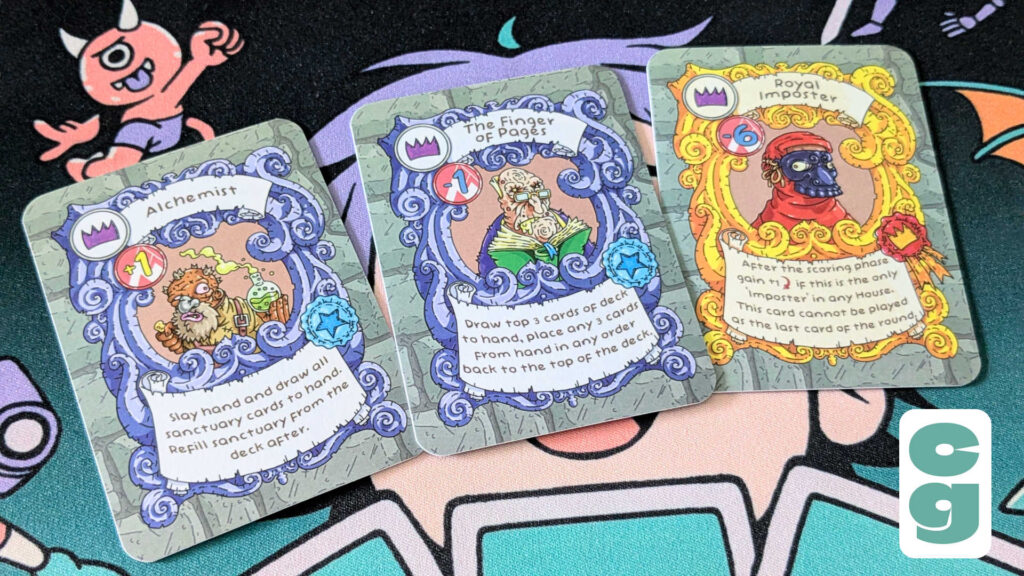
There’s a subset of purple-crowned Character cards (with a few examples above) which have a bit more complexity to use than other Characters, and these can be removed from the deck to make the first few games a little easier to learn and play, but in honesty even with these included, House of Cards isn’t a difficult or overly complex experience.
It’s worth noting that House of Cards is illustrated in a charmingly anarchic way, with amusingly grotesque characters populating the variety of misfits that you’ll be dealing with and adding to your House during the game. Though the symbols used in card abilities could do with being a bit bigger and clearer, the card design overall is well done, and House of Cards overall has a striking, unique aesthetic that gives the impression of regal portraits being hung on castle walls as your House grows over the course of a game.
The Card Gamer Verdict
The aesthetic of House of Cards lends the game an appealing visual flair, and it’s a real standout on the tabletop.
The gameplay is just as appealing too, with a fast-paced, “draw 1, play 1” basis and a good variety of choices to make on every turn.
House of Cards can feel a bit too mean at times, and its raucous gameplay works better at higher player counts. However, there’s no denying that House of Cards provides a great deal of accessible fun in a very small, appealingly designed package.
You can buy House of Cards directly from publisher Anarchy 54’s website. Check out our reviews of other small box, independent games such as The Game Chest and Warfront.


